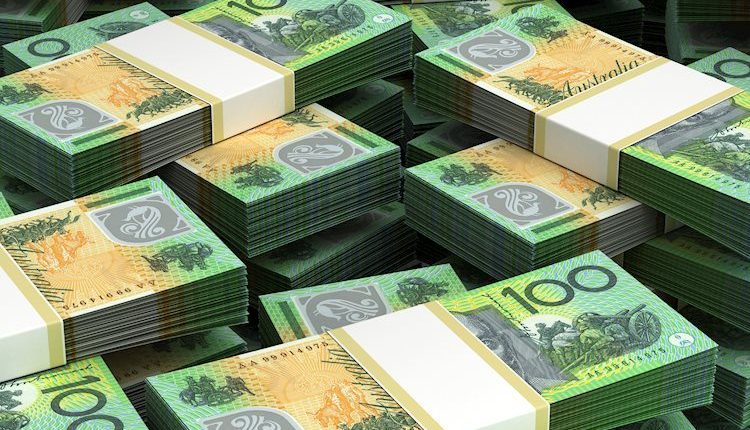- AUD/USD falls as the USD regains strength.
- RBA holds rates steady but remains hawkish, citing inflation risks.
- The Fed’s neutral outlook suggests caution regarding future rate cuts.
The AUD/USD pair declined by 1.25% to 0.6600 on Friday, continuing its downtrend. The renewed strength of the US Dollar weighs on the pair despite improved risk sentiment. However, the hawkish stance of the Reserve Bank of Australia (RBA) and expectations of additional Chinese stimulus could support the Aussie.
The AUD/USD pair experienced volatility amid the recent US presidential election and RBA’s monetary policy stance. Trump’s election victory initially triggered a decline in the Aussie, but the RBA’s hawkish stance stabilized the currency. The RBA’s emphasis on restrictive interest rates and positive signs from China have provided support.
Daily digest market movers: Australian Dollar declines amid renewed US Dollar strength after FOMC meeting
- The Fed acknowledged economic expansion but noted easing labor market conditions and elevated inflation, maintaining a neutral outlook.
- Powell stated that the central bank will continue reducing its balance sheet and follow a data-dependent policy-making approach.
- Earlier in the week, the AUD/USD pair rose after the RBA left interest rates unchanged but signaled a hawkish stance, emphasizing the need for restrictive policy to combat inflationary pressure.
- RBA Governor Michelle Bullock reiterated the necessity of maintaining steady interest rates until the economy moderates more than anticipated.
- As the RBA doesn’t fully embrace cuts, the downside for the AUD/USD might be limited. However, the economic strength on the US is a thing to follow as it might continue pushing the pair down.
AUD/USD technical outlook: AUD/USD turns bearish after failing to capitalize on SMA convergence
The Relative Strength Index (RSI) is at 46, in negative territory, and declining sharply. The Moving Average Convergence Divergence (MACD) is flat and red, suggesting that selling pressure is flat. The overall outlook for the AUD/USD is bearish.
The AUD/USD pair’s failure to surmount the convergence of the 200 and 20-day Simple Moving Averages (SMAs) at approximately 0.6630 signaled a resumption of its downtrend. This technical development led to a decline toward the 0.6600 support level, indicating further bearish momentum. The inability to break above the key resistance at 0.6630 suggests that the pair may continue its downward trajectory in the near term.
RBA FAQs
The Reserve Bank of Australia (RBA) sets interest rates and manages monetary policy for Australia. Decisions are made by a board of governors at 11 meetings a year and ad hoc emergency meetings as required. The RBA’s primary mandate is to maintain price stability, which means an inflation rate of 2-3%, but also “..to contribute to the stability of the currency, full employment, and the economic prosperity and welfare of the Australian people.” Its main tool for achieving this is by raising or lowering interest rates. Relatively high interest rates will strengthen the Australian Dollar (AUD) and vice versa. Other RBA tools include quantitative easing and tightening.
While inflation had always traditionally been thought of as a negative factor for currencies since it lowers the value of money in general, the opposite has actually been the case in modern times with the relaxation of cross-border capital controls. Moderately higher inflation now tends to lead central banks to put up their interest rates, which in turn has the effect of attracting more capital inflows from global investors seeking a lucrative place to keep their money. This increases demand for the local currency, which in the case of Australia is the Aussie Dollar.
Macroeconomic data gauges the health of an economy and can have an impact on the value of its currency. Investors prefer to invest their capital in economies that are safe and growing rather than precarious and shrinking. Greater capital inflows increase the aggregate demand and value of the domestic currency. Classic indicators, such as GDP, Manufacturing and Services PMIs, employment, and consumer sentiment surveys can influence AUD. A strong economy may encourage the Reserve Bank of Australia to put up interest rates, also supporting AUD.
Quantitative Easing (QE) is a tool used in extreme situations when lowering interest rates is not enough to restore the flow of credit in the economy. QE is the process by which the Reserve Bank of Australia (RBA) prints Australian Dollars (AUD) for the purpose of buying assets – usually government or corporate bonds – from financial institutions, thereby providing them with much-needed liquidity. QE usually results in a weaker AUD.
Quantitative tightening (QT) is the reverse of QE. It is undertaken after QE when an economic recovery is underway and inflation starts rising. Whilst in QE the Reserve Bank of Australia (RBA) purchases government and corporate bonds from financial institutions to provide them with liquidity, in QT the RBA stops buying more assets, and stops reinvesting the principal maturing on the bonds it already holds. It would be positive (or bullish) for the Australian Dollar.
Read the full article here

